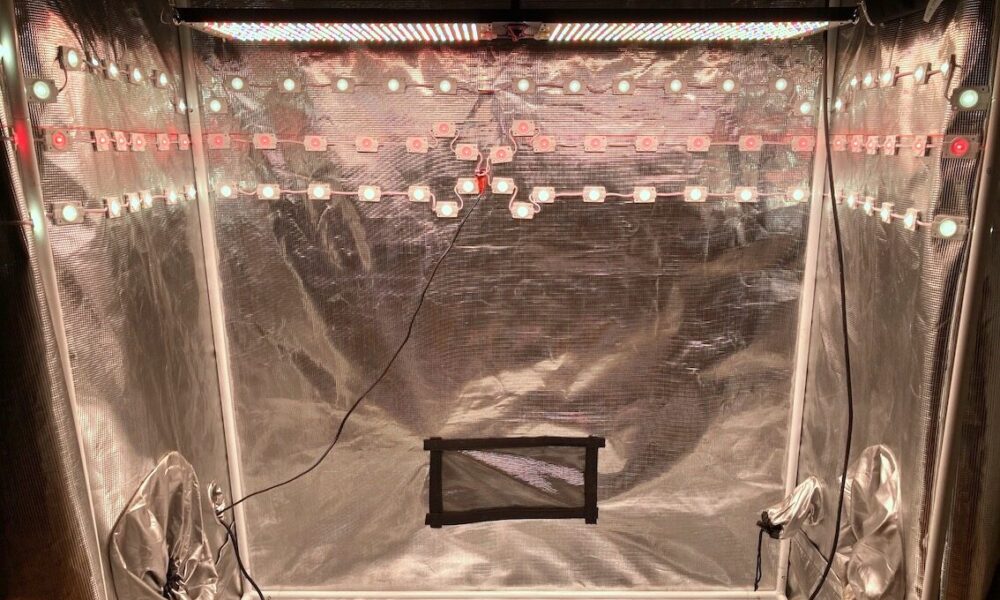As for CO2, temps and stomatas:
High CO2 levels will tend to close the stomata and reduce transpiration and may mess up standard vpd calculations. The drop in transpiration can be remedied by adding heat or reducing rh, or you can try fiddling with spectrum: a high blue (or added uv) spectrum will tend to be more transpiring, especially if combined with low green, as green tends to negate or inhibit the plants blue response.
How much? No idea, one would have to dial in and try and get it to work as above. The important idea is that adding CO2 means you will have to tweak environment, spectrum or both.
This would be rather easy to add to my program if i had any extra power…..hmmA research team are running a few tests now. Moving light from the top, to the sides, and through the middle. From where the light was okay up top, to where the light was lacking. Where the lower illumination zones see greater return per unit of extra power. As we see on the graph.
In real terms, adding 200umol when you already have 600, is just a 10-15% gain in production, for 33% more power input.
If we instead add 200umol to an area that only had 300umol, We might see 30% more there, for 66% more light. At first glance, this isn't a great leap. The real gain though, is that bud grown under 300umol, was going in the rubbish pile. While bud grown at 500umol, is a fair commercial standard. That's not a gain that percentage can even quantify.
Interlighting is certainly not new. Side-lighting is in the early books, where people used boards that looked like ghetto made sunbeds. It's 30 years ago I first run a trial myself. Commercially it seems like Philips championed there commercial use, with linear LED fittings, through high wire tomato crops. Now it's back to us again. Frankly I'm surprised it's taken so long. I/we already know it's a goal. I think the sheeple just need to see a proper team report on this, and @Mars Hydro Led will be giving us some choices.
I have used 50w cobs looking up. It seems the sweet spot. 100w was a bit much heat unless carefully placed. While watering them by accident needs thinking about to. Any form of interlighting really hits a wall with mounting them. A decent net is a lot to ask. Lights? I think this might be too much for some.
Edit: I lost the article, but just found another with pics. I'm afraid the results will be tainted, as they were sidetracked by some bedroom furnishings, on their way around Ikea







